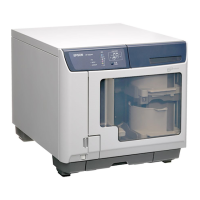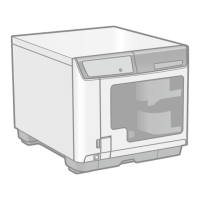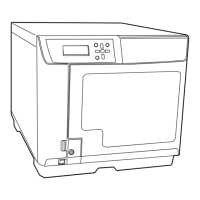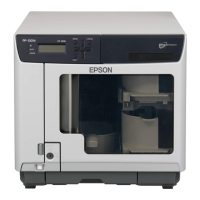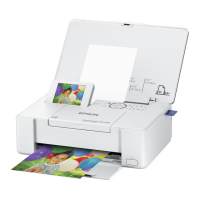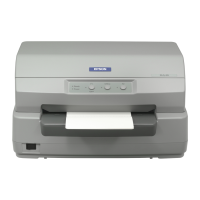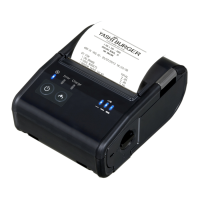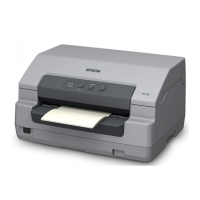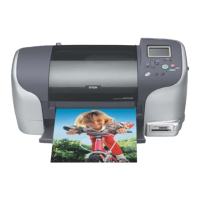How to turn on Epson Disc Duplicator when all lights are off?
- LLauren NelsonSep 4, 2025
If all the lights on your Epson Disc Duplicator are off, press the power button to ensure the product is turned on.
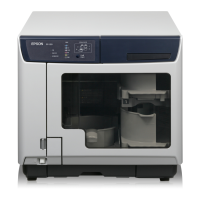
How to turn on Epson Disc Duplicator when all lights are off?
If all the lights on your Epson Disc Duplicator are off, press the power button to ensure the product is turned on.
What to do if lights came on and then went out on Epson Disc Duplicator?
If the Epson Disc Duplicator displays lights that turn on and then immediately turn off, it could indicate a voltage mismatch between the product and the outlet. Immediately turn off the product and unplug it.
Why is my Epson Disc Duplicator printing so slow?
If your Epson Disc Duplicator is printing too slowly, ensure that the label type selected in the printer driver is appropriate for the type of disc you are using.
How to fix horizontal banding on Epson Disc Duplicator?
To resolve horizontal banding on your Epson Disc Duplicator, run the Head Cleaning utility to clear any clogged ink nozzles.
How to fix banding on Epson Disc Duplicator?
To resolve banding on your Epson Disc Duplicator, run the Head Cleaning utility to clear any clogged ink nozzles.
How to fix vertical misalignment on Epson Disc Duplicator?
To correct vertical misalignment on your Epson Disc Duplicator, run the Print Head Alignment utility.
How to resolve blurry or smeared printout on Epson Disc Duplicator?
To address blurry or smeared printouts from your Epson Disc Duplicator, run the Head Cleaning utility.
| Print Technology | Inkjet |
|---|---|
| Connectivity | USB 2.0 |
| Number of Drives | 1 |
| Paper Sizes Supported | CD/DVD |
| Display | No |
| Ink Cartridge Configuration | Cyan, Magenta, Yellow, Black |
Essential safety guidelines to prevent injury and product damage during operation.
Instructions for correctly setting up the product in its operating environment.
Guidelines for selecting an appropriate location for the product.
Precautions and best practices for operating the product to ensure safety.
Precautions and procedures for handling, storing, and replacing ink cartridges.
Guidelines for using and handling CDs/DVDs to prevent data loss or damage.
Restrictions on product use, limitations, and considerations for incidental loss.
Explains the meaning of warning, caution, and note symbols used in the manual.
Procedures for installing and removing EPSON software from your computer.
Configuring the working folder for disc publishing operations.
Introduction to EPSON Total Disc Maker, Monitor, and Setup utilities.
Steps to access the printer driver from various locations within the system.
How to turn the product on/off and understand the different publishing modes.
Configuring drive usage, write retries, and printer name for publishing jobs.
Recommendations for successful CD/DVD writing and printing processes.
Step-by-step guide for loading discs and performing publishing in Standard Mode.
Step-by-step guide for loading discs and performing publishing in External Output Mode.
Step-by-step guide for loading discs and performing publishing in Batch Mode.
Procedures for removing discs from stackers after publishing.
Steps to cancel an ongoing publishing job.
How to view current ink levels and status using the EPSON Total Disc Monitor.
Safety guidelines and step-by-step instructions for replacing ink cartridges.
Checking nozzle status, cleaning print heads, and aligning the print head.
Instructions for cleaning the product exterior, interior, and filter.
Procedures for safely moving and packing the product.
Methods for identifying issues using product lights and common error causes.
Solutions for errors related to covers, disc transfer, stackers, ink, product, and drives.
Steps to fix problems with disc feeding, writing errors, and print quality.
Solutions for print defects, product not functioning, and software installation problems.
Information and procedures for contacting Epson for technical assistance.
Contact information for users in the United States, Canada, and Europe.
Identification of product parts and explanation of control panel features.
Necessary computer specifications and details about supported discs.
Detailed technical data, including printing speeds, dimensions, and ink cartridge part numbers.

